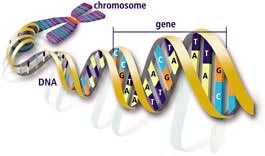
In Thailand, like other tropical countries, one of the most common diseases is round-worm parasitic infection. Generally, parasitic infection is not a serious problem. Infected patients could live their life normally without any serious symptoms. Almost all of patients suffering with these problems could be cured by taking only a tablet of drug. However, few species of round-worm parasites may lead to a critical condition. Among these species, "Gnathostoma spinigerum" is the famous one. It can make infected patients blind, shocked, or even died by invading into inner organs such as liver, kidney, or even brain. Human is usually infected the worm by eating larval worms which always contaminate in raw or undercooked freshwater fish, frogs, and snails. Scientists have known for a long time that after ingestion, larval worm would invade into human’s inner organs; however, whether Gnathostoma spinigerum worm has a common route in human’s body to migrate or not had been still mysterious. I was very eager to know the answer; therefore, I decided to do research on the topic of "The Migration in Mice Experimentally Infected with Gnathostoma spinigerum". In this essay, I would like to explain the method and interesting result of my reaserch on Gnathostoma spinigerum migration.
In this research, I decided to study by using mouse as an animal model. The reasons why I chose mouse to be an animal model instead of human were that I, of course, couldn’t use human to be infected and mouse is a very good animal model to study in several aspects. First, the mouse’s common immune systems responding to parasitic infection are similar to those of human. When migrating into mouse’s body, the worms would be responded by the same immune systems like migrating in human’s body; therefore, I could assume that there was no significant difference between in-mouse migration and in-human migration related to immune responses that have effects on the parasites' invasion. Moreover, mouse is an animal which easy to look after. I can feed it by using a feeding set bought from a pet shop. It helps me save my time to look after.
To study the migration of Gnathostoma spinigerum, I divided mice into 15 groups, 3 mice per each, and then experimentally infected them with 10 larval worms per each mouse by oral infection. Mice in each group were sacrificed at different time, those were 0, 1, 2, 3, 6, 12 hours, 1, 2, 3 days, 1, 2, 3 weeks, and 1, 2, 3 months after infected, to be cutting opened and examined to find all of organs to which the worms had migrated.
Interestingly, after all of mice were sacrificed, I found the route of Gnathostoma spinigerum migration. In mice immediately killed after infected, I found all of the worms, 100 percent, in mice's stomach, and then, only 1 hour after mice infected, 43 percent of the worms invaded through stomach's wall and were in the gap between stomach and liver while the others still were in stomach. Surprisingly, only 2 hours after mice infected, all worms were found in liver tissue. The worms stayed in liver until 1 week after I infected mice. After that, at the second and the third week, 65 percent of worms were found in liver, whereas 35 percent of worms were found in abdominal muscle; however, in one month after mice infected, no worms were found in liver tissue and a new target is muscles. All worms migrated to muscles, 60 percent in abdominal muscles, 20 percent in back muscles, and 20 percent in leg muscles. Since 1 months til the end of the observation, the worms tended to migrate randomly. I found the worms in many organs such as abdominal muscles, back muscles, leg muscles, lung, tail, skin, head and even brain.
For the results, we can conclude that after mice experimentally infected, Gnathostoma spinigerum worms will invade through the wall of stomach, migrate to liver and stay there until 1 week, and then the worms go on their migration by invading muscles. Among all muscles, the first targets for most worms are abdominal muscles and back muscles. After that, worms migrate randomly throughout whole mice's body. When we compare my research results with the symptoms in infected patients, it could be possible that Gnathostoma spinigerum has a similar route of migration. Patients suffering with gnathostomiasis usually went to the hospital because skin pain or other abnormalities on skin, especially "creeping eruption" that is the symptoms appearing on patients' skin resulted from migration of the worm through that area. After clinical laboratory examined, almost all of patients were found that there had been liver abnormality before. Therefore, it is very possible that Gnathostoma spinigerum invade to patients' liver before going out and migrated to skin like it does in infected mice.
In conclusion, there can be no doubt that Gnathostoma spinigerum can lead to a serious condition in infected patients because of their random migration after leaving liver. The knowledge about the route of this harmful worm migration will help preventing lethal symptoms before critical damage of inner organs will occur by monitoring laboratory results indicating liver abnormalities.



